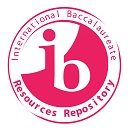Learner Portfolio
 The learner portfolio is a wonderful opportunity for your students to chart their growth and their learning over the two year Language and Literature course. It is meant to act as a tool to aid in their learning, but it's not only that. It's also a space for reflective and analytical thinking, creative and formal writing, spontaneous and studious readings of texts and works.
The learner portfolio is a wonderful opportunity for your students to chart their growth and their learning over the two year Language and Literature course. It is meant to act as a tool to aid in their learning, but it's not only that. It's also a space for reflective and analytical thinking, creative and formal writing, spontaneous and studious readings of texts and works.
Students are to use the learner portfolio to connect to the assessment components of the course, especially the individual oral and the higher level essay, but it's more than a tool for assessment purposes. It's a place for students to find themselves as readers, writers, and thinkers. It's a place for students to grow and develop over time as students of English. And hopefully, if done right, students should find it enjoyable and dare we say it, a little bit of fun too.
As you get your head around the learner portfolio, you’ll want to think about the following in explaining the learner portfolio to students at the start of the year:
- the purpose of the learner portfolio;
- the types of writing, thinking, annotating, and more that students can keep in it;
- how you will use the learner portfolio to develop the thinking, writing and speaking involved in the various assessment components;
- the logistics of where information will be kept (analog or digital);
- how you will use it in class and how often;
- and anything else you think is important for students to know to be successful.
There is also a three page handout in student friendly language that you can use with students. It is meant to help you explain to them what is possible all while seeing the value in keeping their learner portfolio up-to-date and organized. Speaking of organization, there is also a wide variety of formats (digital and analog) students can use when creating their learner portfolio. In the end, it is the hope that the learner portfolio is a transformational space for students as they work through the course.
 IB Docs (2) Team
IB Docs (2) Team